Coral Bells, or Heuchera, are a beautiful and versatile addition to any garden or landscape. With their vibrant foliage and delicate flowers, these plants add color and texture to any setting.
But beyond their aesthetic appeal, coral bells also have a unique ecological role, providing food and shelter for various insects and birds. As such, cultivating and growing coral bells is beneficial for the visual appeal of your space and the environment. Here we will walk you through everything you need to know about how to grow coral bells.
From understanding their basic characteristics to choosing the right location for planting them, we have got you covered. We will also cover various types of coral bells, best practices for their care, and how to troubleshoot common problems that may arise.
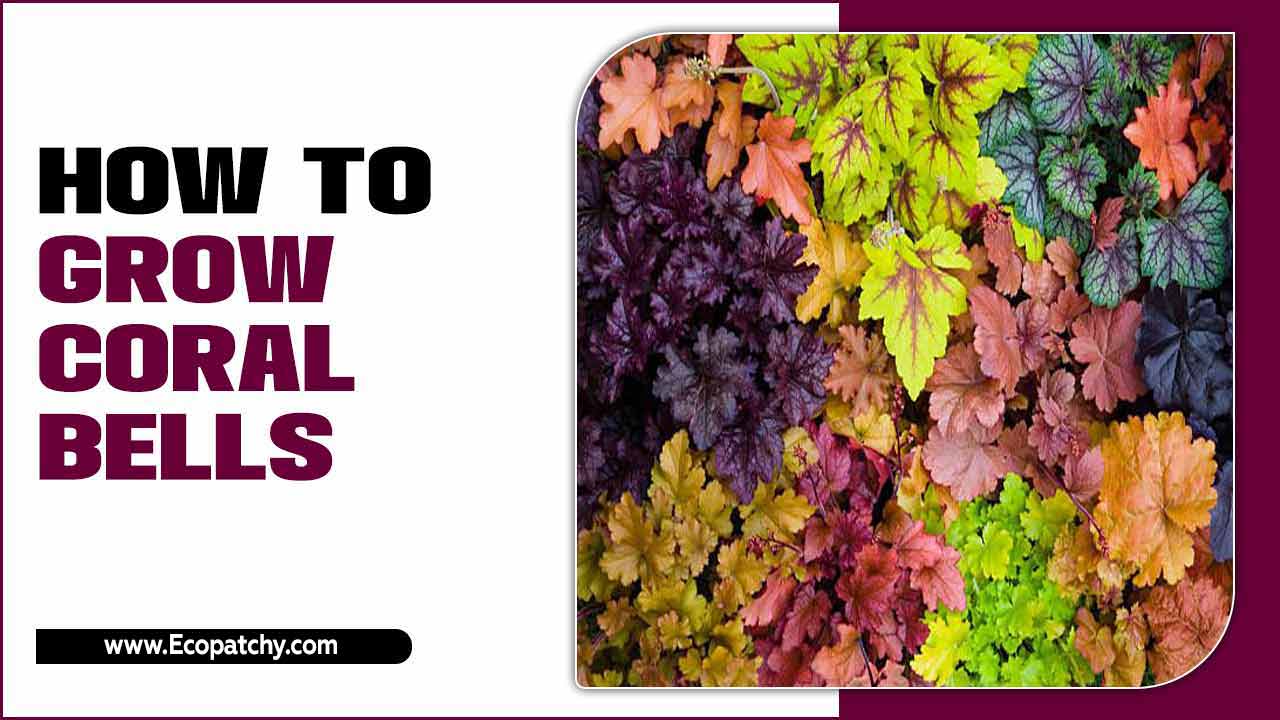
Basic Characteristics Of Coral Bells
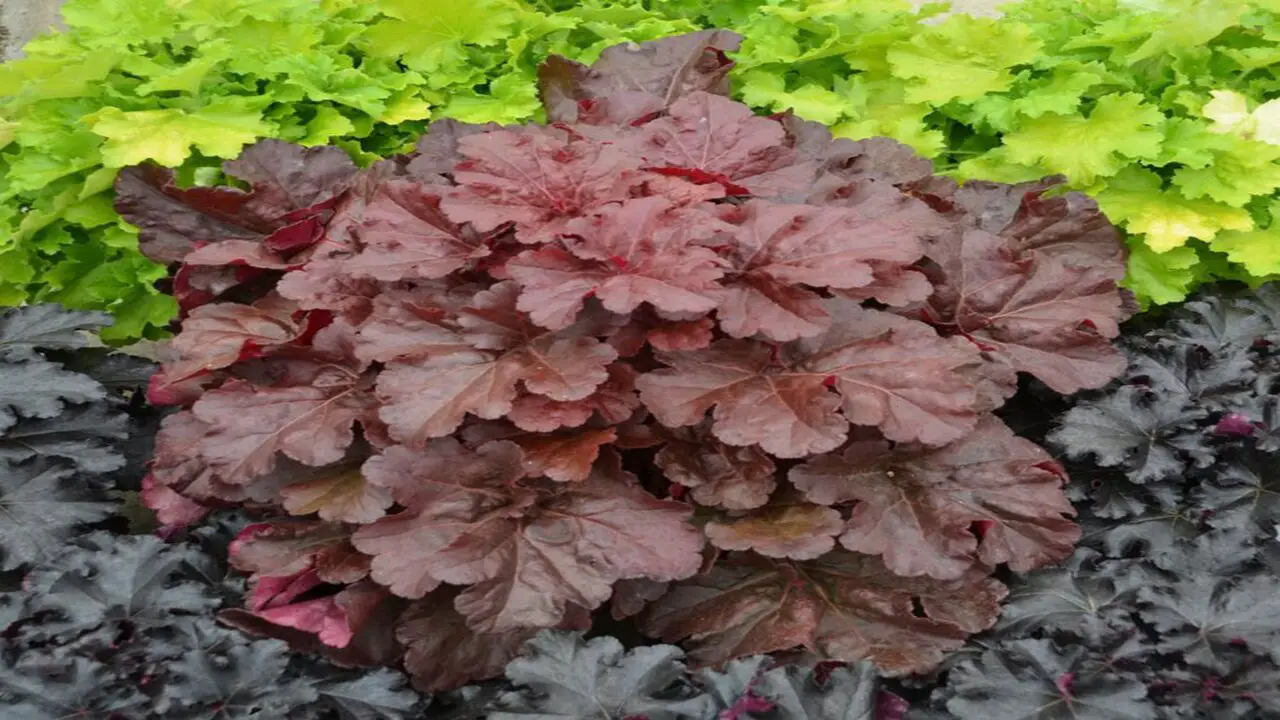
Coral bells, or Heuchera, are herbaceous perennials that typically grow in clumps. They have rosettes of rounded or lobed leaves in various colors, including green, purple, bronze, and silver. These versatile plants produce small flowers on tall stems, attracting bees and butterflies. They thrive in shade or partial shade conditions, making them suitable for ground cover, containers, or rock gardens.
The Difference Between Heuchera And Heucherella

It is important to understand the difference between these two varieties when it comes to growing coral bells, also known as Heuchera and Heucherella. While they are similar in appearance and belong to the same family, some distinct characteristics set them apart.
Heuchera plants are known for their vibrant foliage colors, ranging from deep purples to bright greens, while Heucherella plants have a combination of both Heuchera and Tiarella traits, with deeply lobed leaves and delicate flowers. It is important to consider these differences when choosing which variety to grow in your garden, as their care requirements may vary slightly.
A Step-By-Step Guide: How To Grow Coral Bells

Coral bells, or Heuchera, are popular perennial plants native to North America. These vibrant foliage plants thrive in partial shade, making them a great choice for gardens with limited sunlight. Growing coral bells can add vibrant color to your garden or landscape. Following these steps, you can grow coral bells and enjoy their beautiful foliage and delicate flowers in your garden. Here is a step-by-step guide on how to grow coral bells:
1.Choosing Location For Planting Coral Bells
When choosing a location to plant coral bells, it’s important to consider their light requirements. Different varieties may have different needs, so be sure to research your specific variety. Aim for a spot that receives partial sun to shade. Additionally, ensure that the soil is well-draining and rich in organic matter. Consider the surrounding plants to avoid overcrowding and provide enough space for the coral bells to grow and flourish.
2.Preparing Soil For Planting Coral Bells
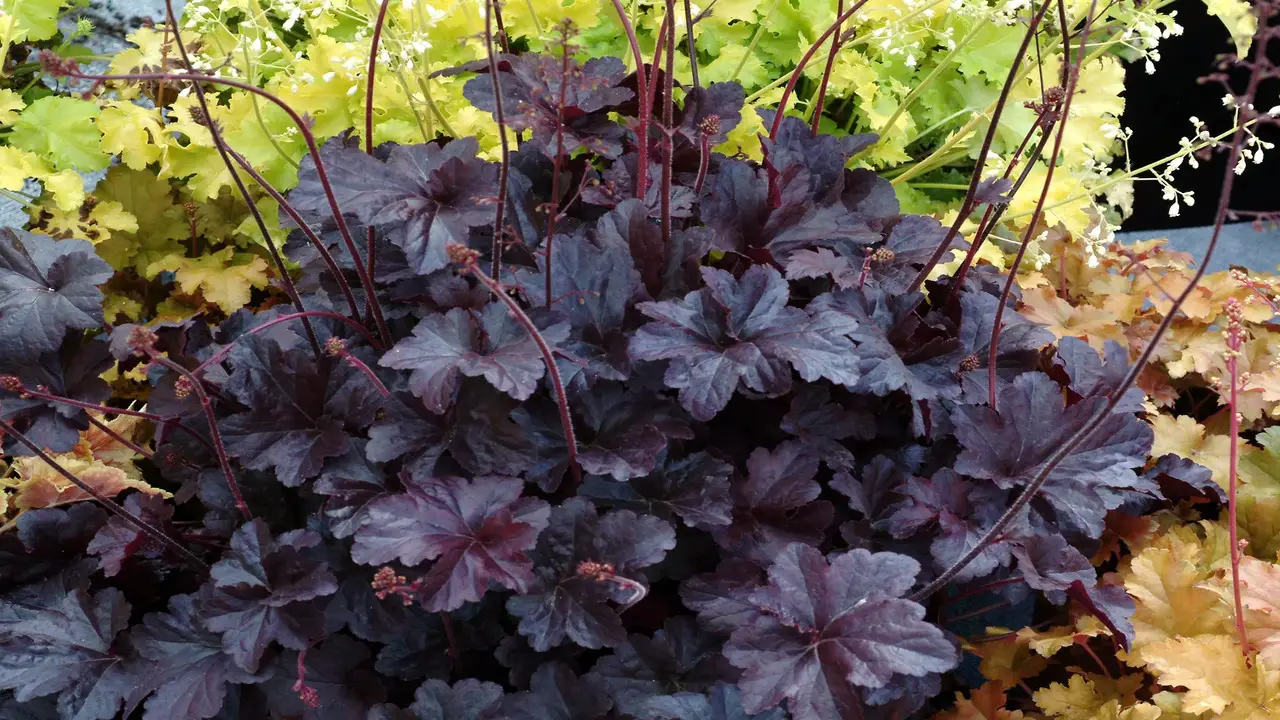
When preparing soil for planting coral bells, choosing a location that offers partial shade is important. This will ensure the plants receive enough sunlight without exposure to the harsh afternoon heat. Additionally, the soil should have good drainage to prevent root rot.
Adding organic matter to the soil can help improve its fertility, providing the nutrients for healthy growth. It’s also important to consider the soil’s pH level, as coral bells thrive in soil with a pH level between 6.0 and 7.0. Avoid planting coral bells in areas with waterlogged soil to prevent root damage.
3.Planting Coral Bells In The Garden
Dig a hole slightly larger than the root ball to plant coral bells in the garden. Place the plant in the hole, ensuring the crown is level with or slightly above the soil. Backfill the hole with soil, tamp it down to remove air pockets, and water thoroughly. Space coral bells plant about 1-2 feet apart for their spreading habit.
4.Watering And Fertilizing Coral Bells
To ensure healthy growth and vibrant blooms, it is important to provide proper watering and fertilization for your coral bells. These plants thrive in moist soil, so regular watering is crucial, especially during dry spells. Applying a layer of mulch around the base helps retain moisture and suppress weeds.
Fertilize with a balanced, slow-release fertilizer in early spring, but be cautious not to over-fertilize, as it can lead to excessive foliage growth and reduced flower production. Monitor soil moisture levels and adjust watering accordingly to maintain optimal conditions for your coral bells.
5.Pruning And Deadheading Coral Bells
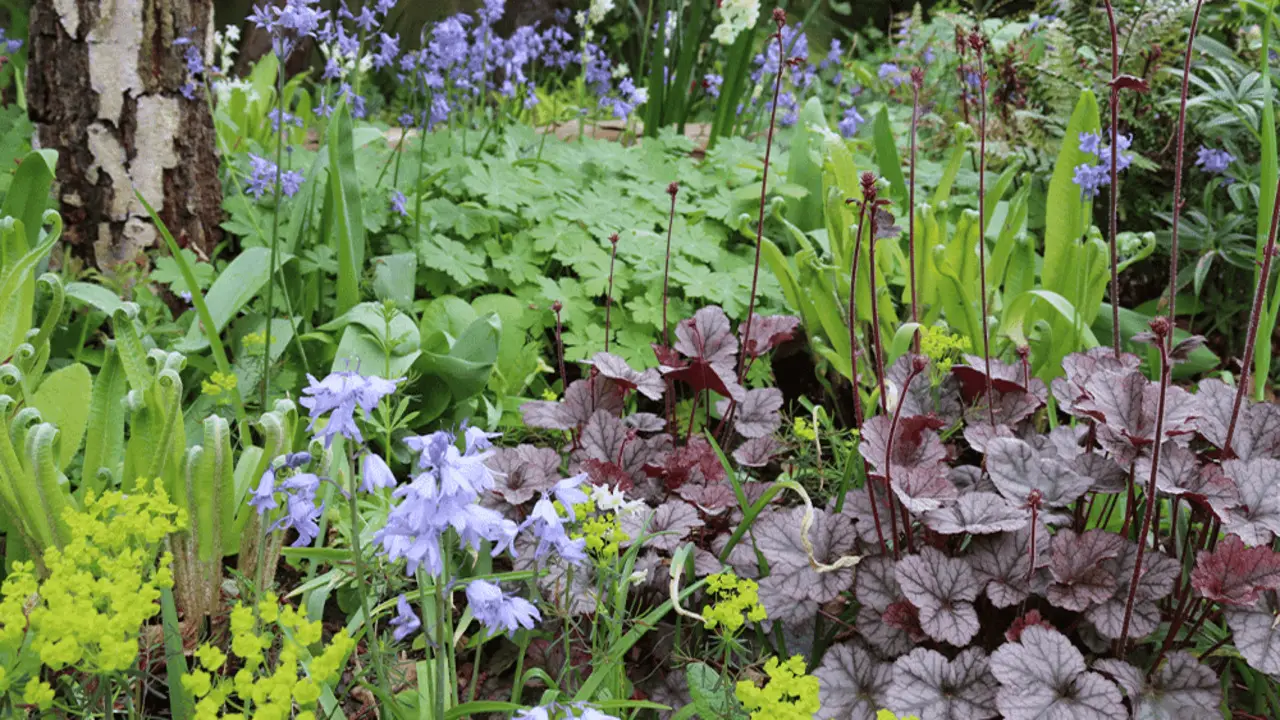
To maintain the health and vigor of your coral bells plant, it’s important to prune and deadhead regularly. Remove any dead or damaged leaves as needed. Deadhead spent flowers to encourage continuous blooming and prevent self-seeding.
Cut back the foliage to the ground in late fall or early spring to rejuvenate the plant. Additionally, divide overcrowded clumps every 3-4 years. Monitor for pests and diseases like powdery mildew and treat them accordingly.
6.Various Types Of Coral Bells
Coral bells, also known as Heuchera, are a popular perennial plant known for their vibrant foliage and delicate flowers. Many different types of coral bells are available, each with unique characteristics. These are just a few examples of the variety of coral bells available.
Whether you’re looking for bold colors or subtle shades, there’s sure to be a type of coral bell that suits your taste and complements your garden beautifully. Here is a list of various types of coral bells that you can consider adding to your garden:
- ‘Palace Purple’: This cultivar features deep purple foliage that adds a dramatic touch to any garden.
- ‘Obsidian’: With its dark, almost black leaves, ‘Obsidian’ creates a striking contrast when planted alongside other plants.
- ‘Fire Alarm’: As the name suggests, this variety boasts fiery red leaves that bring a burst of color to your garden.
- ‘Lime Rickey’: If you prefer a more subtle look, ‘Lime Rickey’ is the perfect choice with its lime green foliage.
- ‘Caramel’: This variety offers warm, caramel-colored leaves that give your garden a soft and inviting feel.
7.Best Practices For Coral Bells Care
Coral Bells, or Heuchera, are beautiful and versatile plants that add color to any garden or landscape. By following these best practices for care, you can enjoy healthy and thriving Coral Bells in your garden for years to come. To ensure the health and growth of your Coral Bells, it is important to follow some best practices for care:
- Location: Coral Bells prefer partial shade to full sun, depending on the climate. Choose a location that receives morning sun and afternoon shade for optimal growth.
- Soil: These plants thrive in well-draining soil rich in organic matter. Amend the soil with compost or peat moss before planting to provide the necessary nutrients.
- Watering: Coral Bells have moderate water needs and should be watered regularly, especially during dry periods. However, be careful not to overwater, as this can lead to root rot.
- Mulching: Applying a layer of mulch around the base of the plants can help conserve moisture and suppress weed growth. Use organic mulch such as shredded bark or compost.
- Fertilizing: Feed your Coral Bells with a balanced fertilizer in early spring and again in midsummer to promote healthy growth and vibrant foliage.
- Pruning: Remove dead or damaged leaves throughout the growing season to maintain the plant’s appearance and prevent disease.
Troubleshooting Common Problems In Coral Bells
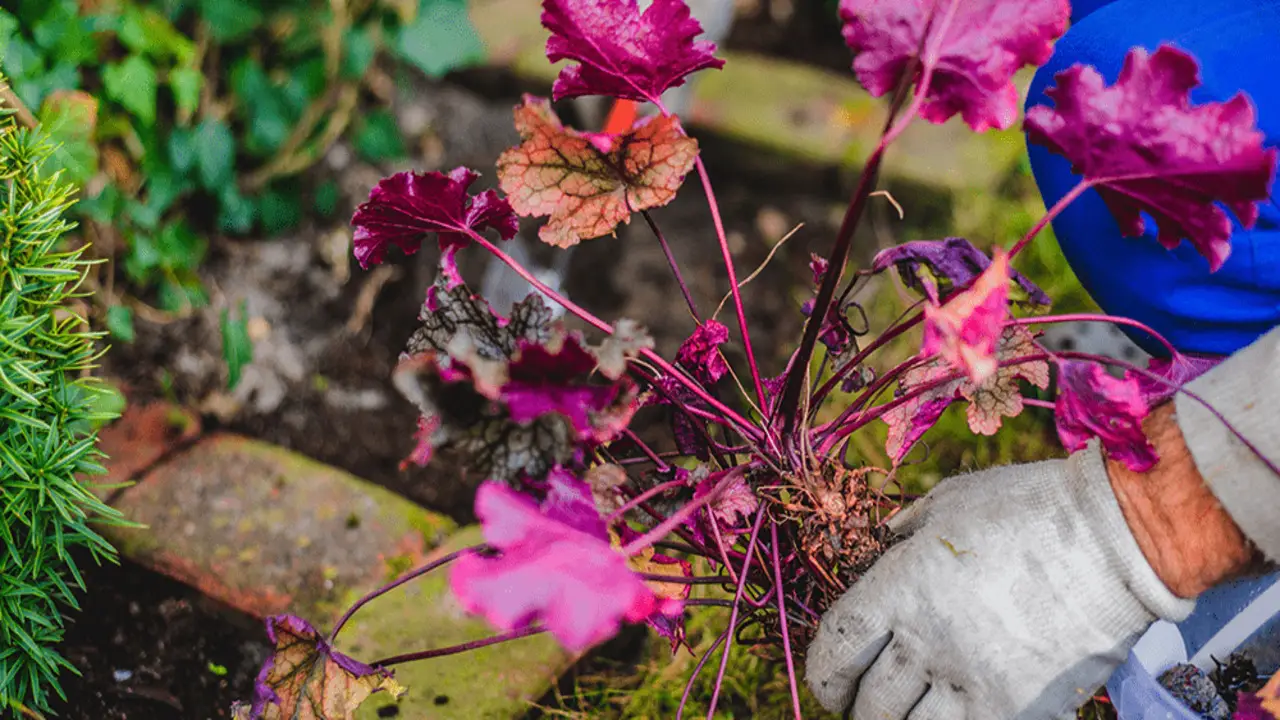
If coral bells are not blooming, ensure they receive enough sunlight and water. Yellow or brown leaves may indicate overwatering or poor drainage. Leggy plants or loss of vibrant foliage color may require division or rejuvenation. Control powdery mildew with proper air circulation and neem oil treatments.
Monitor for signs of root rot, such as wilting leaves or a foul smell, and promptly address the issue. By troubleshooting these common problems and providing the necessary care, you can ensure healthy and vibrant coral bells in your garden. Here are some troubleshooting common problems:
- Overwatering: Coral bells prefer well-drained soil so that overwatering can lead to root rot. Make sure to allow the top inch of soil to dry out before watering again.
- Insufficient Sunlight: Coral bells thrive in partial shade to full sun. If your coral bells are not blooming or have leggy growth, it may be due to insufficient sunlight. Consider moving them to a sunnier location.
- Pests: Common pests that can affect coral bells include aphids and slugs. Regularly inspect your plants for any signs of infestation and take appropriate measures, such as using organic insecticides or handpicking the pests.
- Poor Soil Conditions: Coral bells prefer slightly acidic soil with a pH range of 5.5 to 7.0. If your soil is too alkaline, consider amending it with organic matter or using a specialized acid-loving fertilizer.
- Winter Damage: In colder climates, coral bells may experience winter damage, especially if not properly protected. Mulching around the base of the plant can help insulate the roots and prevent frost damage.
Maintaining Coral Bells Over Time
Maintaining coral bells over time requires careful attention, but with the right tips, you can keep these beautiful plants thriving. Following these maintenance tips, you can enjoy the beauty of coral bells in your garden for years. Here are some key tips for maintaining coral bells:
- Regular Watering: Coral bells prefer consistently moist soil, so water them regularly, especially during dry spells or hot weather.
- Mulching: Applying a layer of mulch around the base of the plants can help retain moisture in the soil and suppress weeds, which can compete with coral bells for nutrients.
- Fertilizing: Feed your coral bells with a balanced fertilizer once or twice a year to provide them with the nutrients for healthy growth.
- Pruning: Remove dead or damaged leaves and stems to promote new growth and maintain an attractive appearance.
- Divide And Transplant: Over time, coral bells may become overcrowded. To prevent this, divide and transplant them every few years to give them more space to grow.
Conclusion
To successfully grow coral bells, it is essential to understand their basic characteristics and the difference between heuchera and heucherella. Following a step-by-step guide on how to grow coral bells, you can plant and care for your coral bells effectively.
Remember to choose a suitable location, prepare the soil properly, and provide adequate watering and fertilization. Regular pruning and deadheading will help maintain the health and appearance of your coral bells.
Additionally, there are various coral bells to explore and incorporate into your garden. By following these best practices and troubleshooting common problems, you can ensure the long-term success of your coral bells.
Frequently Asked Questions
1.Where Do Coral Bells Grow Best?
Ans: Coral bells, or Heuchera, thrive in well-drained soil with partial to full shade. They can tolerate some sun if the soil is moist. These hardy perennials, native to North America, grow in woodlands, rocky areas, and meadows. Ideal for USDA zones 4-9.
2.Will Coral Bells Spread?
Ans: Coral bells can spread through rhizomes or self-seeding. To manage their spread, divide the plant every 3-4 years and consider less aggressive varieties. Proper spacing and pruning techniques can also help control the spread of coral bells in your garden.
3.Does Coral Bells Come Back Every Year?
Ans: Yes, coral bells are perennials and will return each year. Proper care and maintenance are essential for their longevity. Regular pruning and deadheading can encourage new growth and prevent overcrowding. Providing well-draining soil and partial shade will promote optimal growth.
4.Why Are My Coral Bells Dying?
Ans: Coral bells can die due to various factors like overwatering or underwatering. Pests and diseases can also cause wilting and death. Ensure well-draining soil and check for signs of pests/disease. Treat accordingly.
5.Are There Any Coral Bells Varieties That Work Well In Hot Climates?
Ans: Certain coral bell varieties are more heat-tolerant than others. “Southern Comfort,” “Caramel,” and “Marmalade” are known to perform well in hot climates. Providing sufficient shade and moisture is crucial for their success. For specific advice on cultivars suitable for your area, consult a local nursery or gardening expert.
